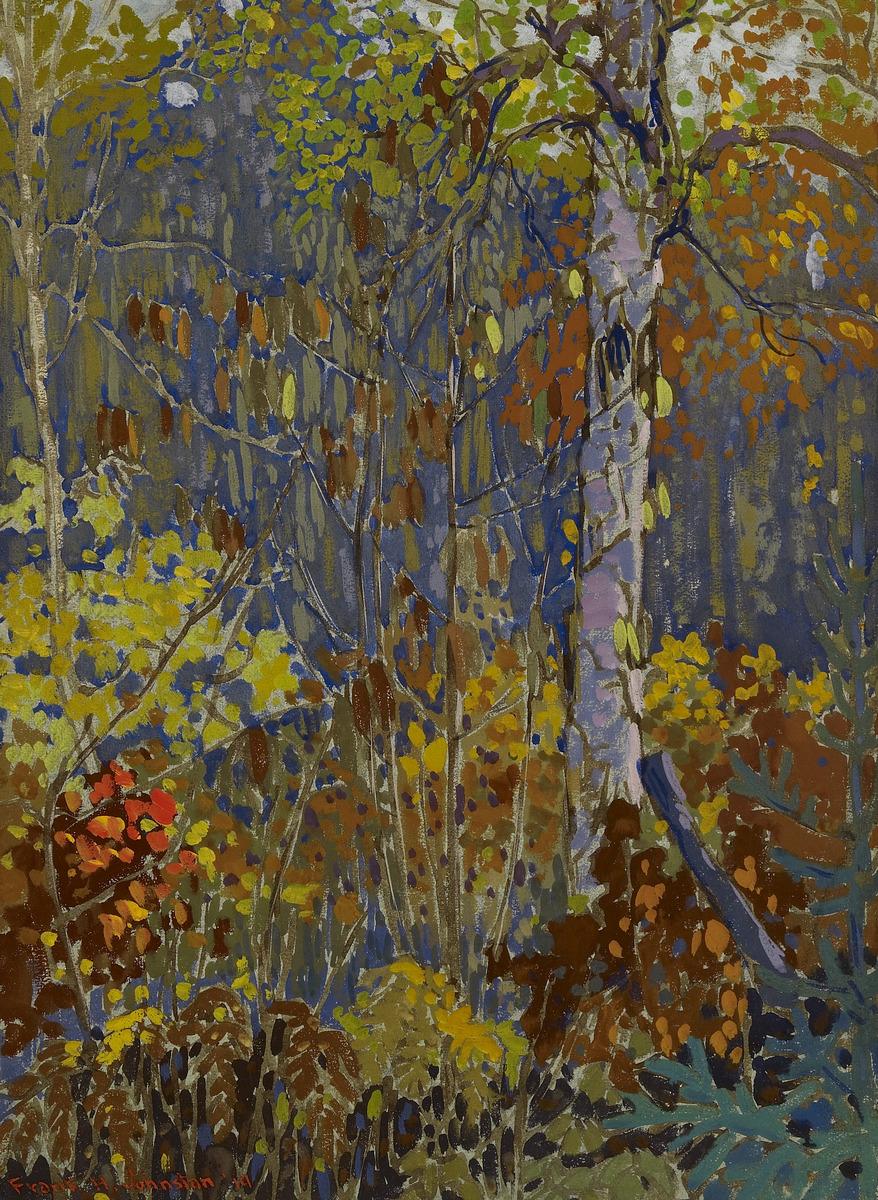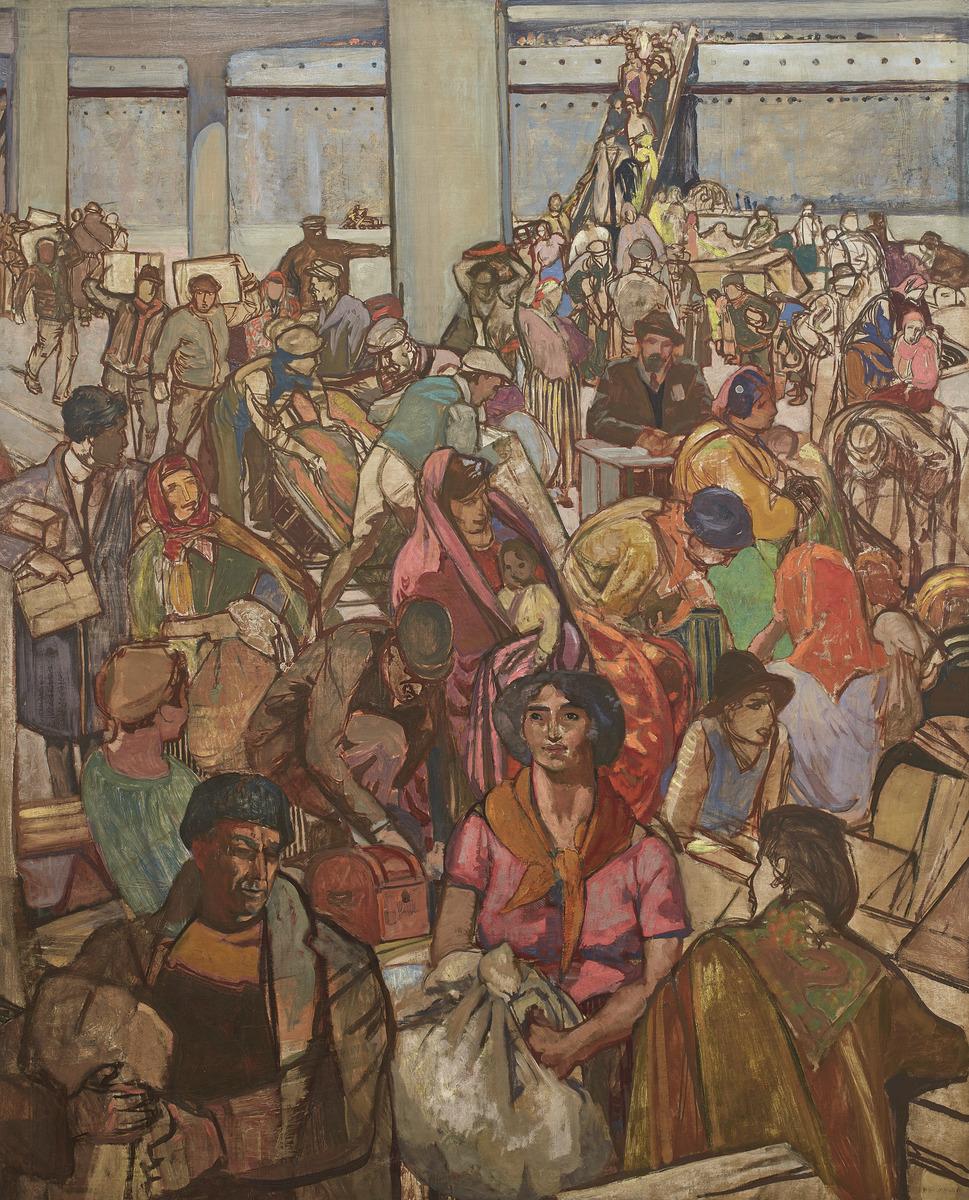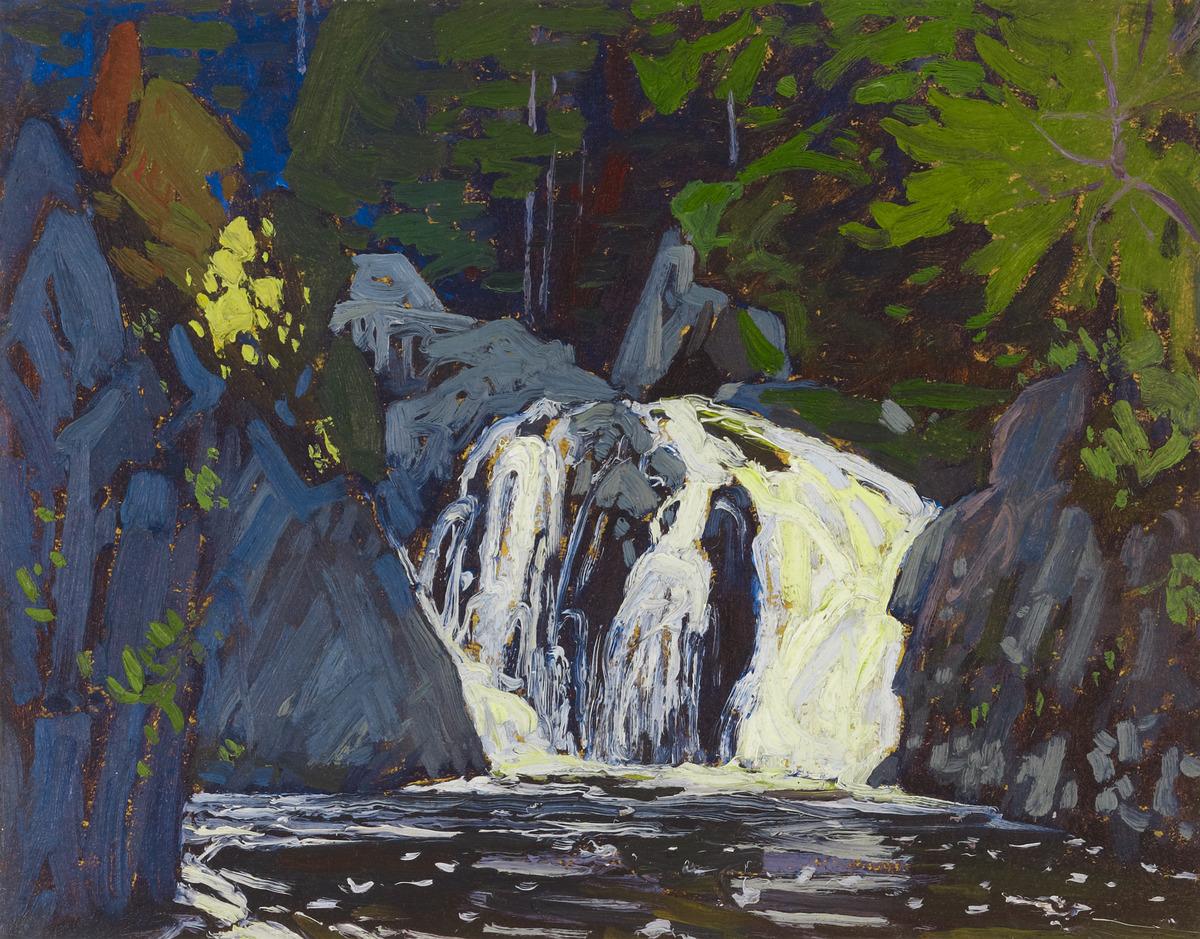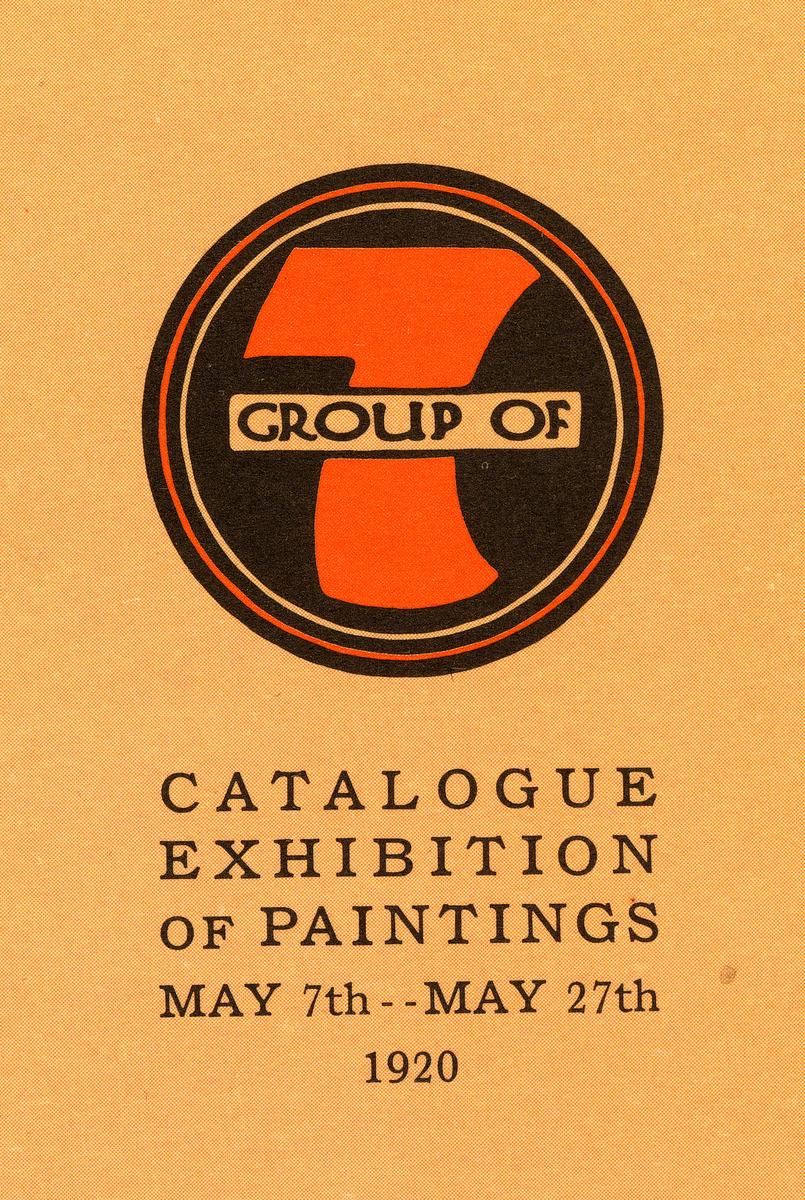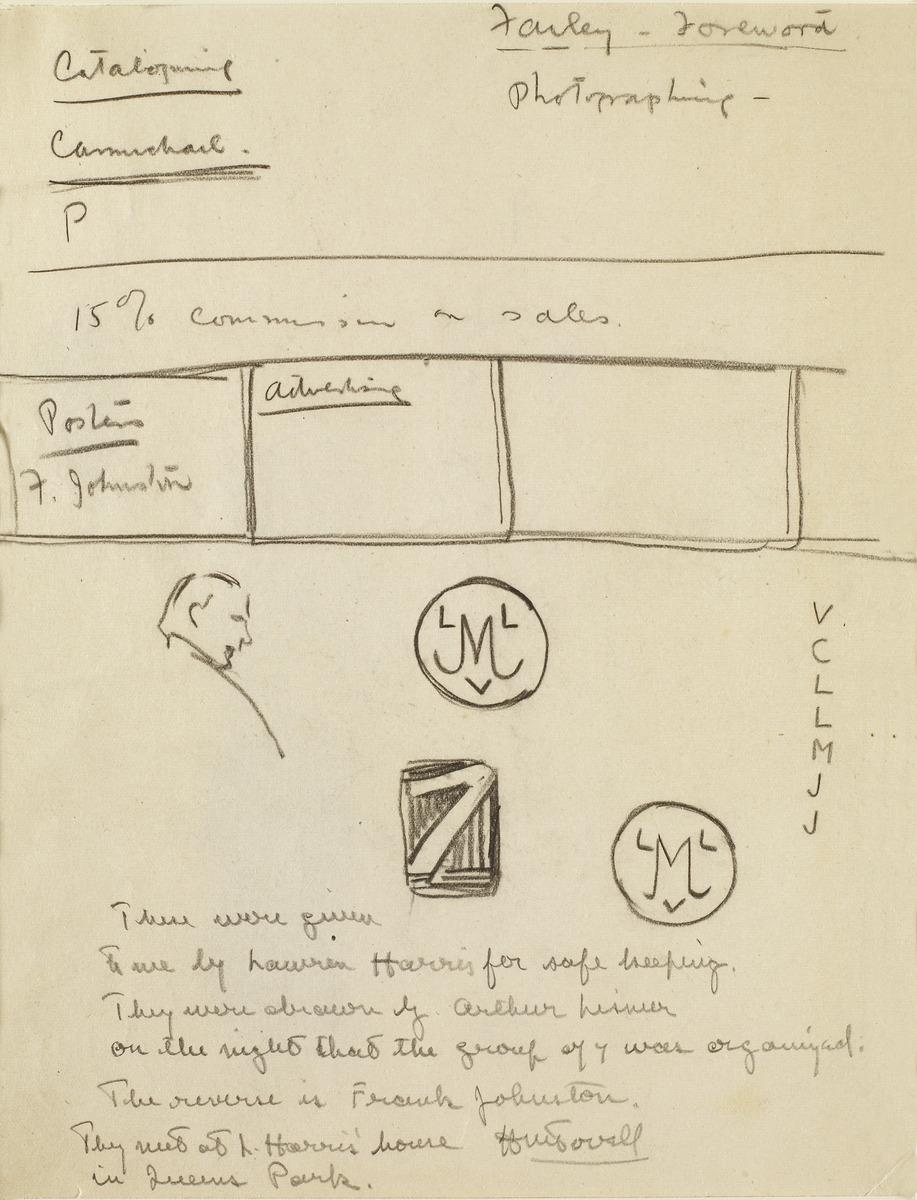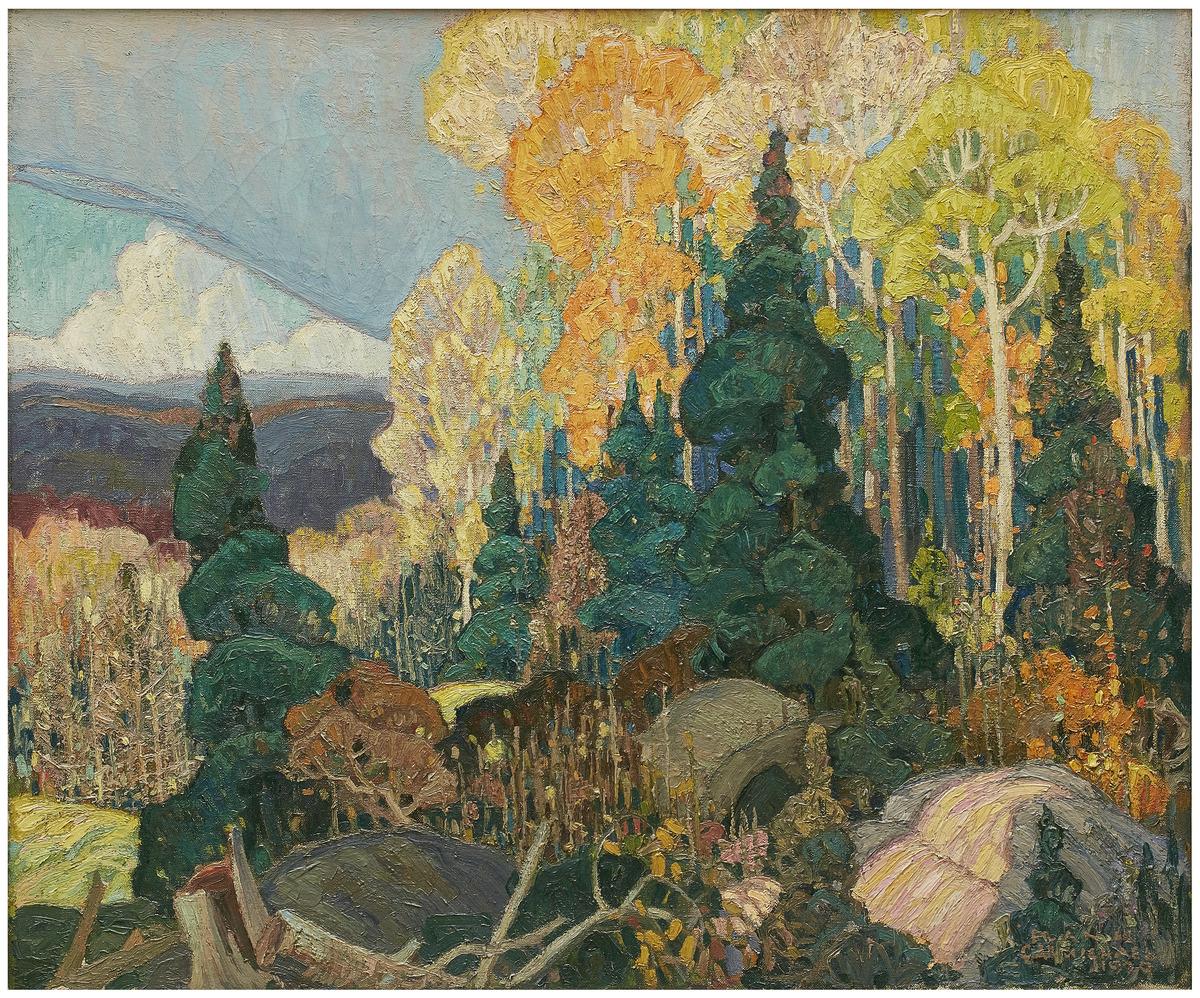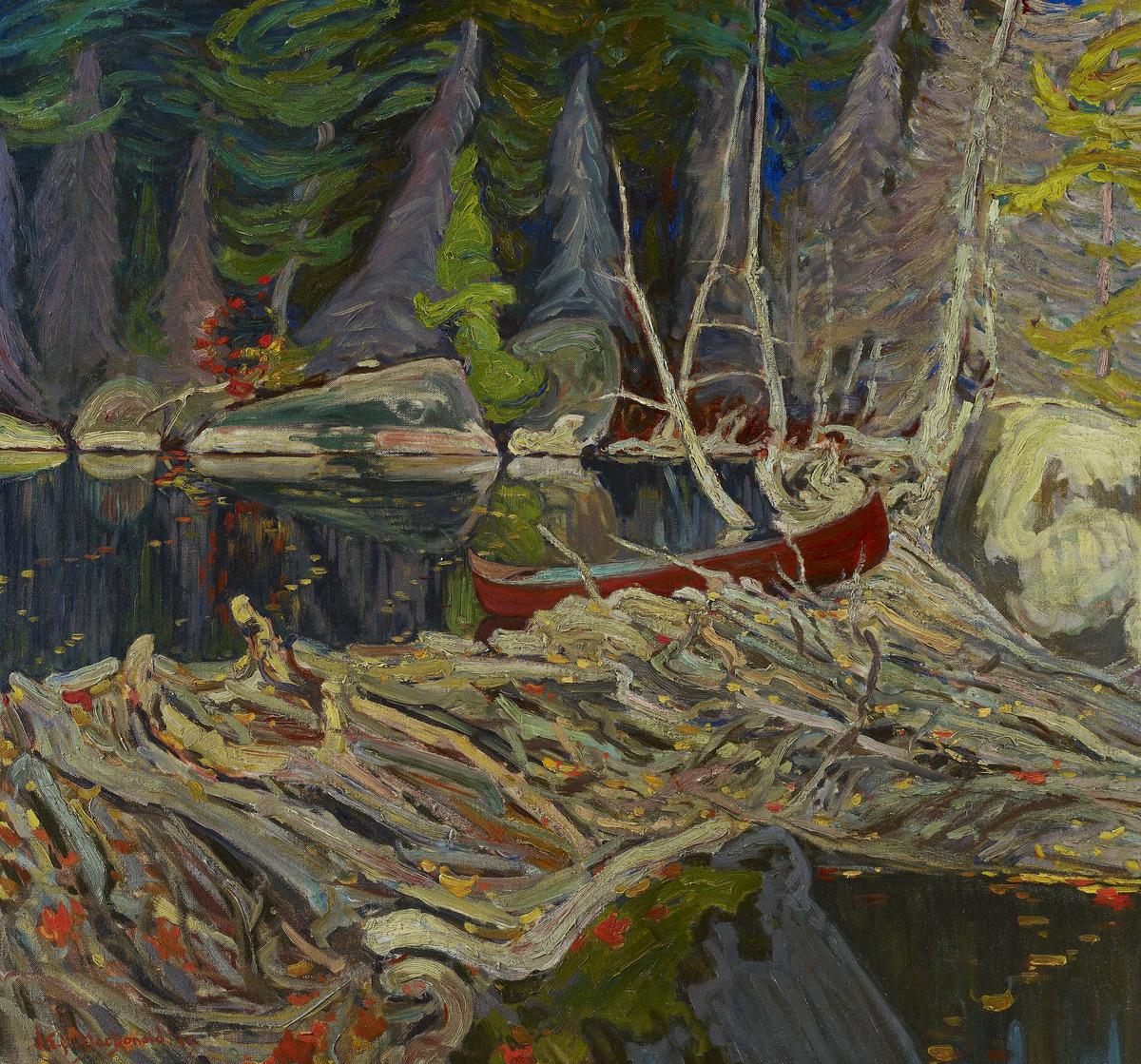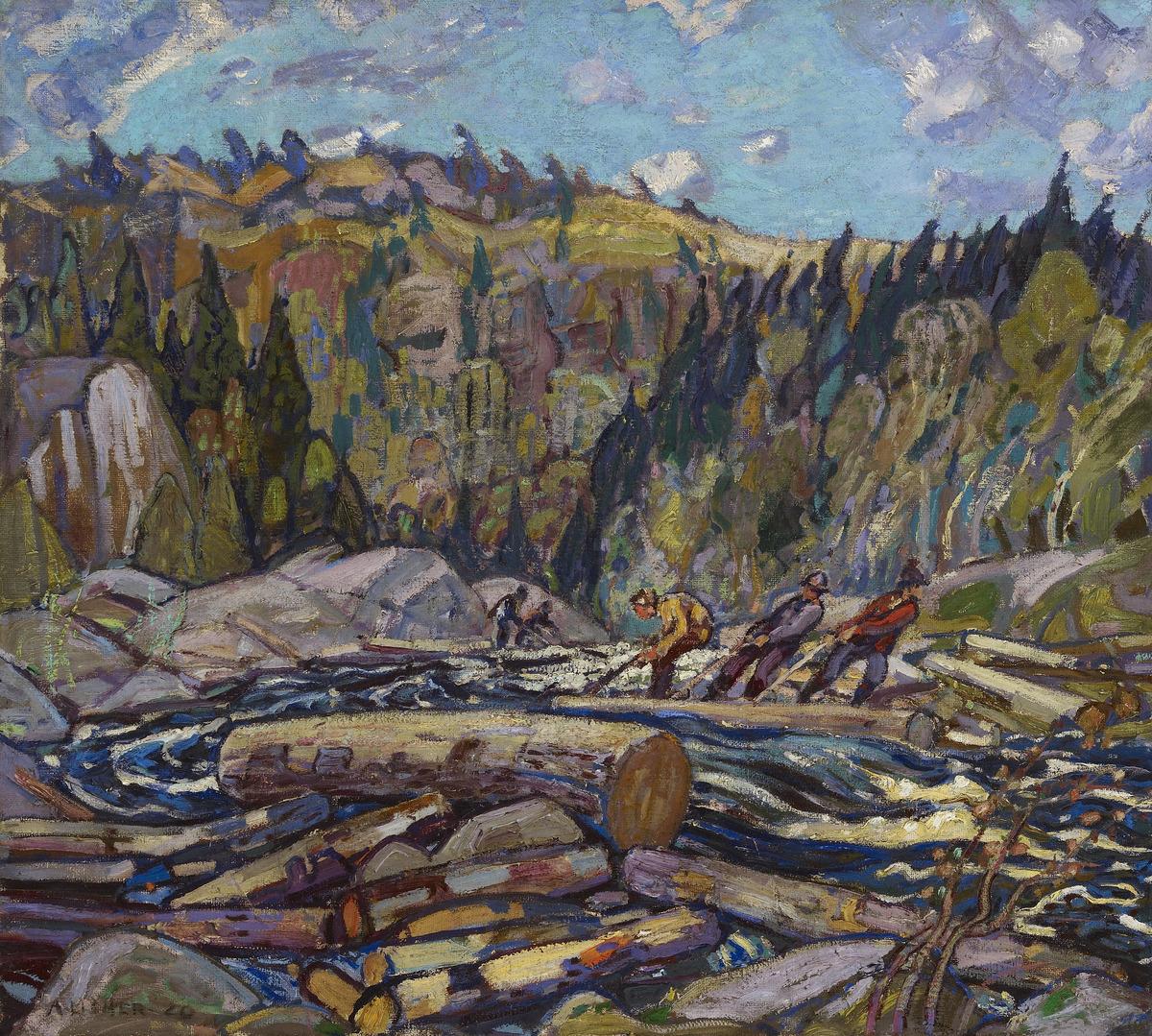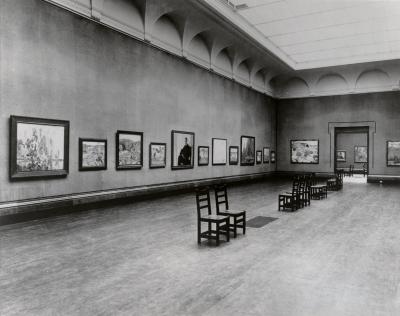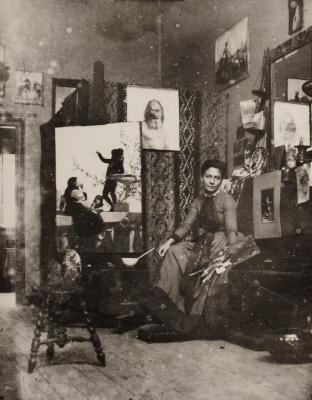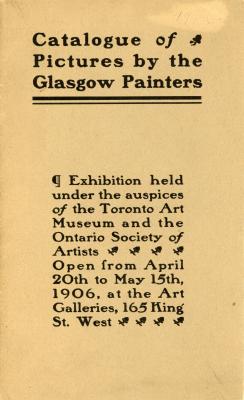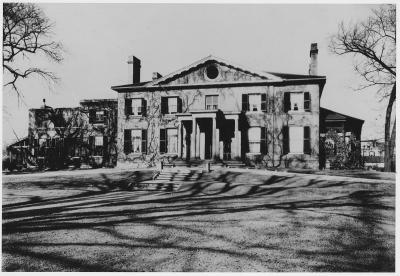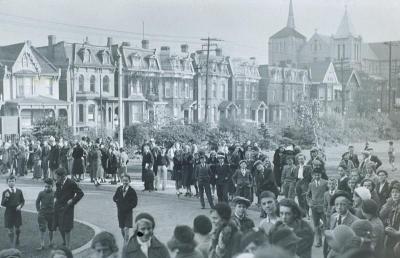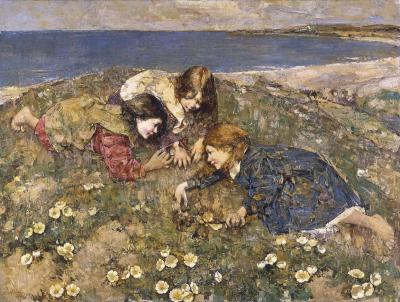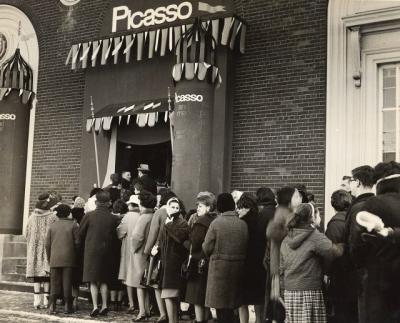AGO 125: When Seven Became One (Group)
In 1920, the Group of Seven hosted their first exhibition at the AGO
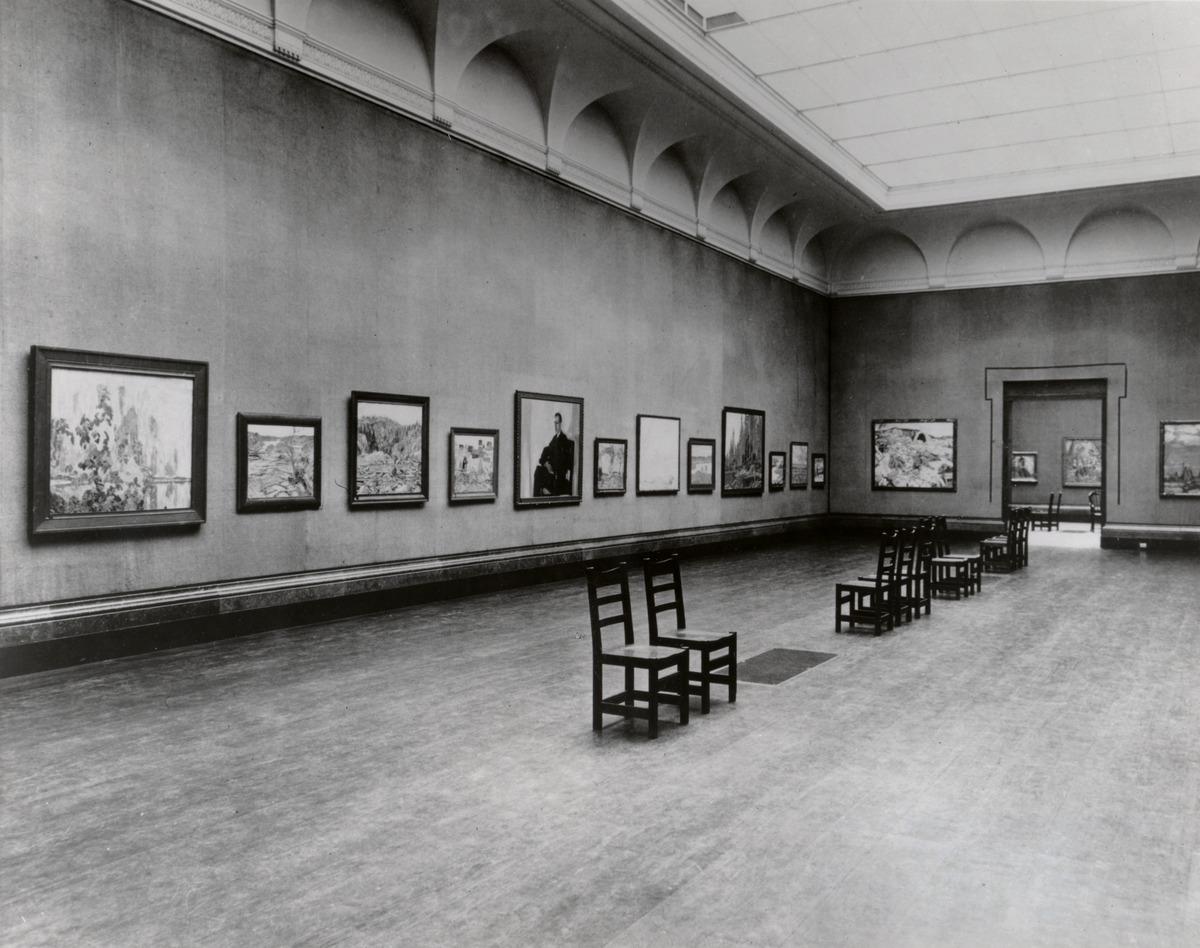
Group of Seven Exhibition Catalogue, May 1920, Art Gallery of Toronto. Edward P. Taylor Library & Archives, Art Gallery of Ontario. Photo © AGO.
May 7, 1920, was a sunny and mild Friday. Anyone wanting to visit the Art Gallery of Toronto (now the Art Gallery of Ontario) would have paid twenty-five cents to enter. Inside, they would see an exhibition by locally known artists, eager to propel their art and vision to the forefront.
In 1920, the AGO was very much in its infancy; only the year before, it had changed its name from Art Museum of Toronto to Art Gallery of Toronto, and its exhibition space was limited to just three galleries, referred to by their shape – octagon, square and long.
Across these three galleries, 121 works were arranged as part of the exhibition simply titled The Group of Seven, named after the association of young, Canadian landscape painters formalized by this very exhibition.
The founding members of the Group of Seven included Franklin Carmichael (1890 – 1945), A.Y. Jackson (1882 – 1974), Franz (also known as Frank) Johnston (1888 – 1949), F.H. Varley (1881 – 1969), Lawren Harris (1885 – 1970), Arthur Lismer (1885 – 1969), and J.E.H. MacDonald (1873 – 1932).
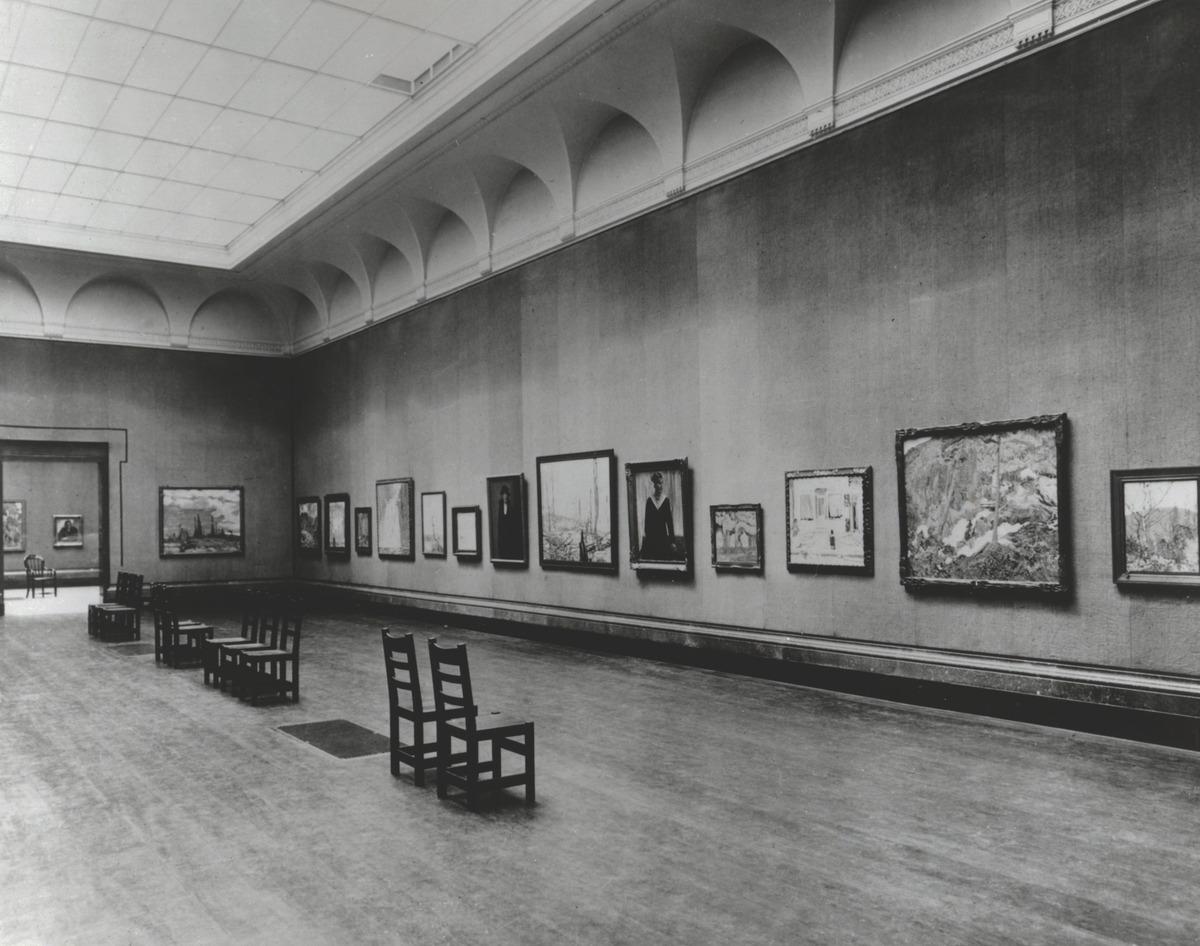
Group of Seven Exhibition Catalogue, May 1920, Art Gallery of Toronto. Edward P. Taylor Library & Archives, Art Gallery of Ontario. Photo © AGO.
The founding members of the Group of Seven were based in Toronto; many of them were colleagues at the design firm Grip Ltd., all members of the Arts & Letters Club, and frequent exhibitors at the Ontario Society of Artists. Some had been war artists, and some taught at the Ontario College of Art (now known as OCAD University). But this exhibition was a first – their first expression of their shared purpose, their first articulation of a common vision.
While this exhibition formally launched their association, the group began meeting in 1910 to paint the rural outskirts of Toronto, eventually taking camping trips in northern Ontario to capture its majestic lakes, forests, and glacial bays. The group shared the belief that distinct Canadian art could be created through direct contact with nature, creating, as Harris, the group’s de facto leader, said, “a way of painting dictated by Canada itself.”
The exhibition featured bold Algoma-inspired landscapes, portraits, urban scenes, garden views and works produced for Canadian War Memorials. In addition to featuring select works by the original founding members of the group, three Montreal artists, R.S. Hinton, R. Pilot, and Albert Robinson, were also included in that initial exhibition at the invitation of Jackson, who saw the Group of Seven’s aim as being national in scope. Although they themselves would not join the group, they would serve as leading members of the Canadian Group of Painters.
Approximately 2,000 visitors would pass through the Gallery doors during the exhibition’s twenty-day run. The exhibition was accompanied by a pamphlet, which could be purchased for ten cents. Elegantly designed, befitting a collective largely made up of commercial artists, the logo across the top was the creation of Lismer.
Written by Harris, the double-sided pamphlet featured a lengthy foreword; it was both a vision statement and provocation in one: "The group of seven artists whose pictures are here exhibited have for several years held a like vision concerning Art in Canada," Harris wrote. “These images invite adverse criticism.”
Responses from critics were loud and varied: “Are these new Canadian painters crazy?” asked The Canadian Courier, while the Toronto Star could only concede that “these seven painters show some excellent work.”
Toronto artistic circles were not surprised – MacDonald’s The Tangled Garden (1916) raised eyebrows since its debut when journalist and arts commentator Hector Charlesworth accused the artist of throwing "...his paint pots in the face of the public."
The Group of Seven would sell very few works during the exhibition – two by Carmichael to a private buyer and three to the National Gallery of Canada: Jackson’s Night, Georgian Bay (1913), Johnston’s Fire-swept, Algoma (1920), and Harris’s Shacks (1919). Yet, they persisted, re-imagining ancient lakes and woods, Arctic vistas and the magic of the northern lights.
This exhibition was a historic moment for both the AGO and the Group of Seven. The Gallery remained one of their largest proponents, hosting eight exhibitions between 1920 and 1931. The Group of Seven’s work is inseparable from the Gallery’s development, from being a cornerstone in the Canadian Collection to developing many exhibitions celebrating the distinctive ways they portrayed the beauty of Canadian land and nature.
In celebration of the AGO’s 125th anniversary, Foyer is highlighting foundational moments in the Gallery’s history that have helped make the AGO the institution it is today. Stay tuned for more Foyer stories and public events celebrating this milestone.
